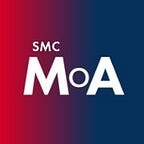Questioning Artificial Intelligence (AI) as an Art Medium
By Katherine Trevino-Yoson
If you feel overwhelmed trying to keep up with all the new developments in Artificial Intelligence, you are not alone. Artificial Intelligence as an art medium is one of the cutting-edge applications of technology not anticipated by many in the art world. So what is art made by Artificial Intelligence? How prevalent is it, and what is the current discourse surrounding it?
AI (artificial intelligence) art, also called algorithmic art, is a medium in which individuals create a program that creates visual output based on machine learning and existing content found on the internet (Elgammal 2019). The merits and authenticity of AI is a hotly debated topic in the mainstream, fueled by the rise of widely-marketed text-based algorithms such as Dall-E2, Stable Diffusion, and Midjourney (Roose 2022).
This discourse has recently come to a head through the rise of visible utilization of AI in the art world. Questions of the ethicality and authenticity of AI art have been raised after a piece of AI art, generated through Midjourney, won a state fair competition. Creator Jason Allen faced criticism online, with an individual even commenting that AI art was the “death of artistry.” (Roose 2022).
Despite the controversy, others speak about the potential benefit this medium can offer to artists. Jonathan Dotse, director, writer, and founder of Afro CyberPunk in Ghana, argues that AI art can be a powerful tool for artists. In a recent virtual visit to one of Saint Mary’s anthropology classes, Dotse argued that AI art is simply a reflection of already existing human-made creations, which have been synthesized and changed to reflect new human-inspired text input. Therefore, we should not fear the possibilities that AI art might produce, as it is a “monster from our own head.” Allen, the winner of the Colorado Art Contest, echoes a similar perspective, saying in a New York Times article, “human creativity is still required to come up with the right prompts to generate an award-winning piece” (Roose 2022). Others argue that intention, creativity, and human curation is the key factor that makes AI art legitimate (Elgammal 2019).
As an anthropology student, I lacked the background in art discourse on art and authenticity, so I explored AI art with the preconception that AI art was “fake” and worth less than traditional media. I was uncomfortable with the possibility of AI art becoming an authentic medium. However, after hearing Dotse’s perspective, I began appreciating this evolution within the art world. What parts of our lives are truly untouched by technological advancements? Is it not the point of art to transform human creativity into a form experienced by an audience? Considering these questions, I re-evaluated my perceptions of legitimacy in art and artistic creation.
To look further into the development of AI art, I signed up for Dall-E2, a text-input-based program that takes input text and generates an image. I figured, what better to experiment with the program than with some current work displayed in the exhibition, Fake It Till You Make It: A Quest for Authenticity?
I selected several pieces in the current exhibitions and entered a text-based input that described the art, to see what the Dall-E2 program could produce. Here are the outputs:
While some of the outputs were shockingly similar to pieces in Saint Mary’s collection that are currently out for display, others generated in ways I did not expect. AI art has, and will continue to open the possibility for many artists to be introduced to a new medium and have a tool to express their creativity in a new way. How can that be negative? And if you leave this blog post still worried about the future of art, consider the new possibilities it can bring to the ever-evolving art world!
To learn more and partake in the conversation of authenticity in art history, join us for our afternoon dialogue on November 17 at 5:30 p.m. More information can be found here.
Notes:
Elgammal, Ahmed. 2019. “Ai Is Blurring the Definition of Artist.” American Scientist. The Scientific Research Honor Society. June 14. https://www.americanscientist.org/article/ai-is-blurring-the-definition-of-artist.
Gonzalez, Ella. 2019. “Modern Art Is Art, but It Is Also Much More.” Pepperdine Graphic. December 11. http://pepperdine-graphic.com/modern-art-is-art-but-it-is-also-much-more/#:~:text=Photo%20by%20Milan%20Loiacono%20of,a%20painting%2C%20a%20sculpture%20perhaps.
Loos, Ted. 2020. “Artists Explore A.I., with Some Deep Unease.” The New York Times. The New York Times. April 8. https://www.nytimes.com/2020/04/08/arts/design/ai-artists-exhibitions.html.
Roose, Kevin. 2022. “An A.i.-Generated Picture Won an Art Prize. Artists Aren’t Happy.” The New York Times. The New York Times. September 2. https://www.nytimes.com/2022/09/02/technology/ai-artificial-intelligence-artists.html.
